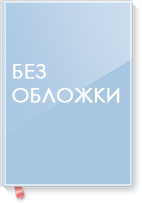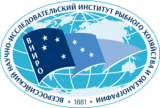База данных: Электронная библиотека
Страница 1, Результатов: 2
Отмеченные записи: 0
1.
Подробнее
З-34
Заринская, Е.А.
Выращивание молоди осетровых и разведение корма для них = The breeding of the Acipenseridae fry and Cladocera as food for them / Заринская, Е.А. // Работы по биологии молоди рыб: Труды ВНИРО. - М. - Л.: Издательство "Пищепромиздат", 1939, - Т. 8. - С 3-26/Papers on the biology thresh fishes: Transactions VNIRO. - M. - L.: "Pishchepromizdat" Publishing, 1939, - Vol. 8. - P. 3-26. - 1939
~РУБ Article
Рубрики: Осетровые/Sturgeons
Разведение/Cultivation
Питание/Feeding
Химия/Chemistry
Физиология/Physiology
Продуктивность/Productivity
Аннотация: Работы 1937 г. позволили наметить метод разведения Cladocera, который требует, однако, дальнейшей разработки в целях повышения выхода продукции с единицы площади, а также более углубленного обоснования самого метода. Выяснена схема питания и кормления осетровых. Намечен ассортимент кормов и суточные рационы молоди осетровых. Метод определения рабочей продуктивности Cladocera получил общие обоснования, но требует дальнейшей разработки. Работы по физиологии питания не были поставлены, и этот вопрос требует обязательной разработки. Выяснены биологические циклы Daphnia magna, D. pulex, Simocephalus и Moina и их зависимости от внешних условий. Для развертывания всех намеченных работ в полупромышленном масштабе требуется не только расширение саратовских бассейнов, но и наличие более обширной базы, как Тепловский питомник./Analyses of the feeding of the fry and yarlings A. Guldenstadti from the Volga river have shown that their main food is Gammaridae and Chironomidae. Pure cultures of Daphnia have shown that the four-five days old D. magna lay eggs and the first young appear on the fifth-eleventh day; one and the same individual produces more than six parthenogenetic broods; after sexual reproduction the same individual continues producing a parthenogenetic offspring; subsequent broods follow every two-three days; the periods of the changing of the generations are five-eleven days; separate individuals lay as many as thirty-one eggs. According to the method of Hofer-Buschkiel one cubic meter of food cultures provides 140-160 gramms of crude biomass of Daphniae for twenty-four hours during July-August months. The feeding of the young A. stellatus Pal. begins from the fifth-sixth day first wiht young Moina and is gradually replaced with adult D. magna. The day's ration is about ten per cent of the weight of the fry and consists of Daphnia, which are gradually replaced by Chironomidae. The average weight of the one month old fry is 2,1 gm. and the length 78,0 mm.; two months old fry - 7,4 gm., its length - 129,7 mm., three months old fry - 11,7 gm., its length - 150,2 mm. The determination of the maximum productivity of the volume unit, the method for calculationg the food biomass and the semi-industrial experiments on breeding Acipenseridae fry are problems of futher work.
З-34
Заринская, Е.А.
Выращивание молоди осетровых и разведение корма для них = The breeding of the Acipenseridae fry and Cladocera as food for them / Заринская, Е.А. // Работы по биологии молоди рыб: Труды ВНИРО. - М. - Л.: Издательство "Пищепромиздат", 1939, - Т. 8. - С 3-26/Papers on the biology thresh fishes: Transactions VNIRO. - M. - L.: "Pishchepromizdat" Publishing, 1939, - Vol. 8. - P. 3-26. - 1939
Рубрики: Осетровые/Sturgeons
Разведение/Cultivation
Питание/Feeding
Химия/Chemistry
Физиология/Physiology
Продуктивность/Productivity
Аннотация: Работы 1937 г. позволили наметить метод разведения Cladocera, который требует, однако, дальнейшей разработки в целях повышения выхода продукции с единицы площади, а также более углубленного обоснования самого метода. Выяснена схема питания и кормления осетровых. Намечен ассортимент кормов и суточные рационы молоди осетровых. Метод определения рабочей продуктивности Cladocera получил общие обоснования, но требует дальнейшей разработки. Работы по физиологии питания не были поставлены, и этот вопрос требует обязательной разработки. Выяснены биологические циклы Daphnia magna, D. pulex, Simocephalus и Moina и их зависимости от внешних условий. Для развертывания всех намеченных работ в полупромышленном масштабе требуется не только расширение саратовских бассейнов, но и наличие более обширной базы, как Тепловский питомник./Analyses of the feeding of the fry and yarlings A. Guldenstadti from the Volga river have shown that their main food is Gammaridae and Chironomidae. Pure cultures of Daphnia have shown that the four-five days old D. magna lay eggs and the first young appear on the fifth-eleventh day; one and the same individual produces more than six parthenogenetic broods; after sexual reproduction the same individual continues producing a parthenogenetic offspring; subsequent broods follow every two-three days; the periods of the changing of the generations are five-eleven days; separate individuals lay as many as thirty-one eggs. According to the method of Hofer-Buschkiel one cubic meter of food cultures provides 140-160 gramms of crude biomass of Daphniae for twenty-four hours during July-August months. The feeding of the young A. stellatus Pal. begins from the fifth-sixth day first wiht young Moina and is gradually replaced with adult D. magna. The day's ration is about ten per cent of the weight of the fry and consists of Daphnia, which are gradually replaced by Chironomidae. The average weight of the one month old fry is 2,1 gm. and the length 78,0 mm.; two months old fry - 7,4 gm., its length - 129,7 mm., three months old fry - 11,7 gm., its length - 150,2 mm. The determination of the maximum productivity of the volume unit, the method for calculationg the food biomass and the semi-industrial experiments on breeding Acipenseridae fry are problems of futher work.
2.

Подробнее
С 84
Стребкова/Strebkova, Т.П./T.P.
Некоторые гематологические показатели сеголетков полосатого окуня (Morone saxatilis Mitchill) = Some haematologic characteristics of one-summer-old striped bass (Morone saxatilis Mitchill) / Стребкова/Strebkova, Т.П./T.P. // Вопросы морской аквакультуры: Труды ВНИРО. - М.: Изд-во "Пищевая промышленность", 1979. - Т. 138. - С. 92-95./Problems of mariculture: VNIRO Proceedings. - M.: "Pishchevaya promyshlennost" Publishing, 1979. - V. 138. - P. 92-95. - 1979
~РУБ Article
Рубрики: Патологии/Pathologies
Физиология/Physiology
Полосатый окунь/Morone saxatilis Mitchill
Гематология/Hematology
Разведение/Cultivation
Плотность/Density
Аннотация: Концентрация гемоглобина у сеголетков полосатого окуня варьирует от 6,7 до 8,9 г%, количество эритроцитов - от 2,215 до 3,452 млн./мм3, содержание гемоглобина в одном эритроците - от 23,7 до 33,4 мкмкг в зависимости от условий выращивания. Кровь сеголетков имеет лимфоидный характер. Обнаружены только незернистые клетки белой крови: лимфоциты, моноциты и полиморфноядерные. Сеголетки полосатого окуня, выращенные при плотности посадки 24, 31,5 и 48 тыс./га, физиологически полноценны, но гематологические и рыбоводные признаки рыб, содержащихся при максимальной плотности, хуже./Changes in the haematologic characteristics of one-summer-old striped bass at the stocking densities of 48 000, 31 500 and 24 000 specimens per ha were studied. An attempt was made to define the physiological condition of fish raised under different conditions. It is found that the haemoglobin concentration, the content of erythrocytes and leucocytes and the haemoglobin content in an erythrocyte change in different ways. All one-summer-olds reared under different conditions were physiologicall normal despite different haemotologic characteristics. In specimens reared at the maximum stocking density (48 000/ha) the haemoglobin content in a droplet of blood was he lowest and most variable. Besides, their weight was also the lowest. However these changes were not pathological.
С 84
Стребкова/Strebkova, Т.П./T.P.
Некоторые гематологические показатели сеголетков полосатого окуня (Morone saxatilis Mitchill) = Some haematologic characteristics of one-summer-old striped bass (Morone saxatilis Mitchill) / Стребкова/Strebkova, Т.П./T.P. // Вопросы морской аквакультуры: Труды ВНИРО. - М.: Изд-во "Пищевая промышленность", 1979. - Т. 138. - С. 92-95./Problems of mariculture: VNIRO Proceedings. - M.: "Pishchevaya promyshlennost" Publishing, 1979. - V. 138. - P. 92-95. - 1979
Рубрики: Патологии/Pathologies
Физиология/Physiology
Полосатый окунь/Morone saxatilis Mitchill
Гематология/Hematology
Разведение/Cultivation
Плотность/Density
Аннотация: Концентрация гемоглобина у сеголетков полосатого окуня варьирует от 6,7 до 8,9 г%, количество эритроцитов - от 2,215 до 3,452 млн./мм3, содержание гемоглобина в одном эритроците - от 23,7 до 33,4 мкмкг в зависимости от условий выращивания. Кровь сеголетков имеет лимфоидный характер. Обнаружены только незернистые клетки белой крови: лимфоциты, моноциты и полиморфноядерные. Сеголетки полосатого окуня, выращенные при плотности посадки 24, 31,5 и 48 тыс./га, физиологически полноценны, но гематологические и рыбоводные признаки рыб, содержащихся при максимальной плотности, хуже./Changes in the haematologic characteristics of one-summer-old striped bass at the stocking densities of 48 000, 31 500 and 24 000 specimens per ha were studied. An attempt was made to define the physiological condition of fish raised under different conditions. It is found that the haemoglobin concentration, the content of erythrocytes and leucocytes and the haemoglobin content in an erythrocyte change in different ways. All one-summer-olds reared under different conditions were physiologicall normal despite different haemotologic characteristics. In specimens reared at the maximum stocking density (48 000/ha) the haemoglobin content in a droplet of blood was he lowest and most variable. Besides, their weight was also the lowest. However these changes were not pathological.
Страница 1, Результатов: 2
